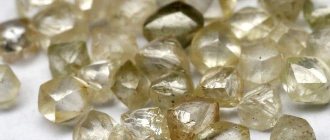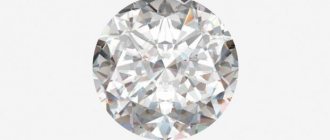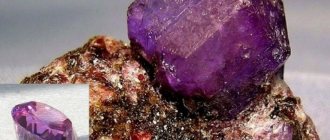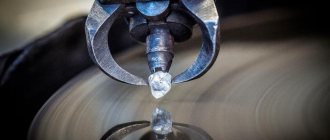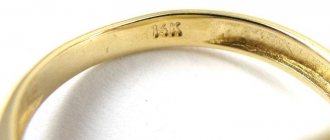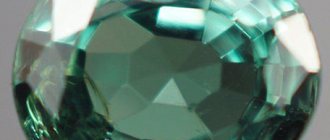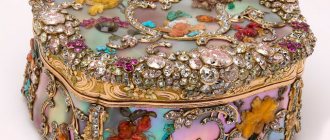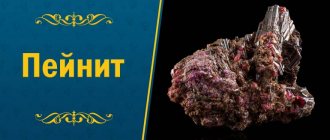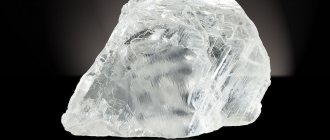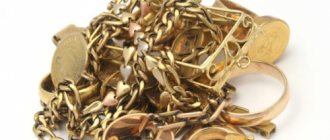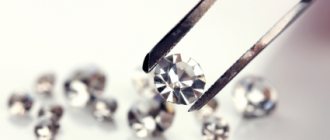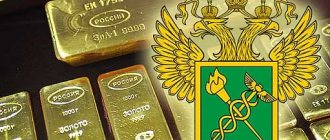The diamond mineral is essentially one of the many modifications of carbon. The physical properties of diamond are determined by the internal structure of the crystal.
Like other minerals, the physical properties of a diamond are assessed according to the following criteria:
- Hardness
- Density (specific gravity)
- Refractive index and dispersion
- Crystal lattice structure (see Chemical properties of diamonds)
A little history
There are many legends and beliefs associated with this amazing stone. And one of them is that a diamond brings good luck to its owner. But only winners in life can own it. And famous people who wore it include Napoleon Bonaparte, Julius Caesar and Holy Roman Emperor Louis the Fourth.
Europe recognized the diamond around the 5th-6th century BC. e., but only 550 years ago it gained its incredible popularity. After all, it was then that they learned how to cut it correctly in order to maximize the properties of a diamond. And all because of its incredible property - enormous strength, while the density of diamond is 3500 kg/m3. What other known mineral can boast the same characteristics?
But the fact that many consider a diamond to be a mineral that cannot be broken has led to the loss of rare and beautiful stones. For example, in 1476, during the war between Duke Charles the Bold (one of the first owners of brilliant-cut diamonds) and King Louis XI, the king's mercenaries managed to break into a tent standing on the battlefield. They were amazed by the placers of diamonds located there. They decided to check the authenticity of the stones with a hammer, and a large number of expensive and beautiful stones were turned into dust.
Diamonds became “friends of girls” only in the middle of the fifteenth century, thanks to Agnes Sorel, the favorite of Charles the Seventh. Now you know the name of the one who made many men “unhappy.”
Diamond stone with ancient history
Diamond stone photo
The history of diamonds dates back, even by the most conservative estimates, many millions of years. Many scientists are inclined to believe that the age of these precious minerals may well be equal to the age of our planet. This explains the number of myths that shrouded its appearance.
The origin of diamonds is associated with India, where seekers of gems of extraordinary beauty have gone for thousands of years. It was there, about three thousand years BC, that these stones became widespread. They were not subjected to any processing, leaving them in the treasuries in their natural form.
The diamond mineral reached the European continent much later, when Alexander the Great found out about it. He organized a trip to India to take possession of hitherto unprecedented jewels. Legend has it that a brave warrior had to fight the snakes that guarded these riches.
And only towards the end of the Middle Ages in the Belgian city of Bruges, where there was a real Mecca for people who traded in gems, they figured out how to give a diamond the shine and sparkle that is already familiar to us. They began to cut it, and a diamond stone appeared, which meant “brilliant.”
Thanks to its sparkling facets, it gained incredible popularity and became even more valuable. The stone began to be mined in very large volumes, and the Indian deposits were depleted. But this only spurred an active search for new ones, and such ones were soon discovered in Brazil.
Currently, mining is carried out in Australia, on the African continent, and in Russia.
The old name for diamond among the inhabitants of India sounded like “farius”; the Romans gave it the name “diamond”. The Greeks appreciated its qualities and began to call it “adamas”, which meant “indestructible”, “unsurpassed”, and the Arabs called it “almas”, which translated into Russian means “the hardest”.
Physical properties
An ignorant person, holding a diamond in his hands, is unlikely to guess what treasure he got. The unprocessed crystal looks very simple and inconspicuous. And most often the mineral is found in nature in the form of irregularly shaped fragments. Well, transparent, well, with high light refraction, which varies from 2.417 to 2.419. What's special about it? Only a sample of an octahedral shape (two pyramids connected by a base) can attract the attention of the average person by the play of light on its edges. It is the high refraction of light that causes what we later call brilliant shine; there is no birefringence. When exposed to the sun for a long time, most stones begin to glow in the dark.
Diamond is also known for its incredible hardness - 10 out of 10 on the Mohs scale. In other words, it is the hardest mineral known on earth. But what the density of a diamond is can be easily found in a reference book. But before we look, try to guess what it should be? Based on its hardness, it is quite high. But even here the diamond shows its paradox.
High hardness is due to the special structure of the cubic crystal lattice, where there is a carbon atom in each corner. One more atom is placed in the center of the face, and 4 atoms are located inside the cube. Thus, those atoms located in the center of the face are common to two neighboring cells, and those at the vertices are common to eight. This method of packing an atom is the densest.
The crystal splits to form smooth parallels (the so-called perfect cleavage). The fracture varies from conchoidal to splintered (of course, not along the cleavage).
Let's look at the reference book: the average density of diamond is 3500 kg/cub.m. Can vary from 3.47 to 4.55 grams per cubic centimeter. Not much for such a hard mineral. According to Razival, the grinding hardness is 140000.0.
DIAMOND and DIAMOND
Currently, this wonderful mineral has been studied thoroughly. Of all precious stones, diamond has the simplest chemical composition. Diamond is 96-99.8% carbon. Diamond is crystalline carbon. In its crystal lattice, carbon atoms are firmly united by covalent bonds. Each atom is connected to the four atoms surrounding it. Diamond crystals are varied, in addition to flat-edged, curved shapes are common. As diamond impurities that determine color and shade, more than 25 elements of the periodic table are installed in it in varying quantities up to 0.3%, such as: (hydrogen) H, (aluminum) Al, (silicon) Si, (gold) Au, (silver ) Ag, (titanium) Ti, (lead) Pb and others. Diamond often contains impurities, mainly iron oxide and silica with traces of lime and magnesia, the proportion of impurities does not exceed 5%. Diamond is colorless, or, which is rare, has colored shades of varying degrees of intensity. Completely colorless diamonds are very rare. As a rule, they have some shade (color). Diamond can be colored in yellowish, grayish, greenish, lilac and brown tones. Diamonds are mainly found with intense colors of yellow, orange, blue, light blue, pink, brown, gray, milky white and black. It is the presence of iron oxide that explains the yellowish tint. Diamond is very stable under normal conditions, but when placed in a vacuum or in an inert gas at elevated temperatures, it turns into graphite. Bort or boart is a cryptocrystalline form in which the diamond crystals are randomly distributed. This term is also used to refer to diamond crystals and their fragments that are not used in jewelry. Such crystals are crushed and used for polishing. Carbonaro (black diamond), like bort, is a cryptocrystalline variety of diamond, a heterogeneous mass of even smaller crystals. Used in the production of cutting tools.
Diamond hardness
Experts consider diamond to be a unique mineral, possessing properties that other substances do not have. Man does not yet know any natural or artificial materials harder than diamond. The high hardness and wear resistance of diamond determine its widespread use in science and technology. For example, on the mineral hardness scale, diamond is the highest standard, diamond hardness is 10, and the highest of all minerals, microhardness, ranges from 93,157 to 98,648 MPa. In this case, diamond exhibits anisotropy of hardness. This property manifests itself in such a way that the hardness of the crystal differs in different directions and on different faces. This property of diamond is used during its processing. The wear resistance of diamond varies over wide ranges; its average value is several times higher than the wear resistance of known abrasive materials, such as silicon and boron carbides.
In popular literature you can find such a “method” for distinguishing a diamond from other stones (by hardness): a diamond leaves a scratch on the glass, while all other stones do not scratch the glass. In reality, some diamond imitations (including the most common cubic zirconia) easily scratch glass. The hardness of window glass is 6, quartz - 7, topaz - 8, cubic zirconia - 8.5, colorless corundum (leucosapphire) - 9, artificial moissanite - 9.5. Therefore, the glass test is not a very successful diagnostic method. Theoretically, instead of glass, you can use another harder material - for example, corundum or moissanite, whose hardness is about 9. But it is important to take into account that in this case scratches will remain on non-diamonds. As a result, the hardness of a diamond, which really distinguishes it from all other stones, cannot usually be used by gemologists as a diagnostic property. It can only serve as an indirect sign: due to its high hardness, a diamond does not lose its shine and play over the years, since its polishing is difficult to spoil. You only need to clean the stone from microparticles of dust and grease from time to time. At the same time, other softer imitations (glass, for example) wear out over the years: their edges become covered with scratches, and their edges become rolled (“rubbed”).
The abrasive ability of any material is determined by the ratio of the mass of the ground material to the mass of the abrasive used for this. If we take the abrasive ability of diamond as one, then the abrasive ability of silicon carbide will be 0.2-0.3, and boron carbide – 0.5-0.6.
Electrical and thermal conductivity of diamond
Diamond has high thermal conductivity. In general, diamonds do not conduct electricity, with the exception of blue diamonds containing boron.
Jewelers often use a diamond tester (diamond detector) to diagnose diamonds. Their work is based on measuring the thermal conductivity of stone. They allow you to distinguish a diamond from all imitations, with the exception of moissanite (since the latter also has a very high thermal conductivity). A moissanite tester allows you to distinguish between a diamond and a moissanite ; in addition to thermal conductivity, it measures electrical conductivity: unlike conductive moissanite, diamond does not conduct electricity!
The thermal conductivity of diamond can change under the influence of temperature.
Diamond Density
The density of diamond is 3.515 grams per cubic centimeter. In nature, there are diamonds in which significant deviations from this value are found, due to the presence of cracks, pores, and various inclusions. The density of transparent diamonds with greenish spots or smoky brown is slightly lower than that of yellow or colorless diamonds. But these density fluctuations are very small. However, as a diagnostic feature, density has an important limitation: density can only be measured for an unset stone.
The properties discussed above - hardness, thermal conductivity, electrical conductivity, density - are conventionally classified as physical. Another group of stone properties is called optical (for example, refractive index, dispersion, color).
Diamond refractive index
The refractive index of light in diamond is high – 2.42. It allows you to find such shapes and proportions of a diamond cut in which the rays of light, entering the stone from the side of the crown, are reflected by the edges of the pavilion and come out again through the edges of the crown. As a result, the observer sees flashes of light in the diamond, even when the stone is in the product, and no light enters it from the side of the pavilion. If the same cut shape is given to another stone with a refractive index close to that of a diamond, the rays will follow the same path, so we cannot distinguish a cut diamond from cubic zirconia either by brightness or by the pattern of reflections of the facets. If you use a standard brilliant cut to cut a colorless sapphire (its refractive index is 1.76) or rock crystal (its refractive index is 1.54), then they can be distinguished from a diamond by their appearance: these stones have less brightness compared to a diamond, through the edges of the pavilion Through a magnifying glass you can see the background, and the pattern of reflections of the facets is different from that of a diamond. Glass imitating a diamond can have different refractive indices, and the higher the index, the more similar the glass is to a diamond in appearance. “Rhinestones” is an old name for imitations of diamonds made of glass, which usually have a high refractive index due to impurities.
Diamond dispersion
Light dispersion is responsible for the “play” of the stone. For a diamond, the dispersion is numerically equal to 0.044, and compared to other stones, this is a high dispersion, so in a diamond we can often see not only white, but also colored flashes of light. The high refractive index (2.417) explains the brilliant shine of the diamond. For light rays of different lengths (colors), the refractive index of diamond is not the same: for red light - 2.402, for yellow - 2.417, for green - 2.427, for violet - 2.465. It is the high dispersion that explains the “play” of cut diamonds – polished diamonds. The dispersion of cubic zirconia and moissanite is close in value to the dispersion of diamond, so we cannot distinguish these materials from diamond by the frequency of color flashes. Some imitation materials - such as strontium titanate (fabulite) or synthetic rutile - have a higher dispersion and therefore exhibit more color flashes than diamond. On the other hand, we can distinguish stones with low dispersion (quartz, topaz, leucosapphire) from a diamond by the absence of color flashes.
Diamond color
Based on color, all diamonds are conventionally divided into two groups. The first group is colorless or near-colorless diamonds (with color tints, especially often yellowish and brownish), among them the most valuable are colorless stones that do not have color tints). Another group is colored diamonds. Some diamond imitations, such as cubic zirconia, can be grown in different colors, including colors that diamond does not have. In this case, cubic zirconia is an imitation of other stones, for example, green - emerald, purple - amethyst. On the other hand, a natural colored stone can be an imitation of a colored diamond, for example, a brown zircon can be passed off as a brown diamond. Black artificial moissanite is used as an imitation of black diamonds. Unlike other properties, color varies from diamond to diamond. That is, all diamonds have the same hardness and density, but different diamonds can have different colors, depending on the content of coloring impurities in them. Occasionally, diamonds or polished diamonds may be found with noticeably uneven color distribution. Brownish-yellow diamonds have a certain attractiveness. Stones with a greenish tint are also common, although this color is rarely present throughout the diamond. Brown diamonds are also common, while pink, ruby red, mauve and blue diamonds are rare. The color of diamonds is associated with the presence of various impurities in the structure of the crystals, sometimes with inclusions of a number of minerals. The most common color of diamonds is yellow, due to the presence of nitrogen atoms. Green pigmentation spots, which color the surface of diamonds greenish or bluish, appear as a result of natural radioactive radiation. When heated they turn yellow. Yellow pigmentation spots are observed on diamonds from ancient placers. There are diamonds with blue and blue coloring, due to the presence of boron in the structure of the diamond. Sapphire blue diamonds are extremely rare and are quite expensive. Smoky-brown and, less commonly, pinkish-lilac diamonds are very common, the color of which is associated with defects on the sliding planes. The milky white color is due to the presence of fine garnet inclusions in the outer part of the diamond. The gray and black color of diamonds depends on the concentration of graphite inclusions. To designate diamonds with black spots interspersed, the definition “pique” is used (from the French word “pique” - pricked, spotted with insect bites).
Diamond becomes blue, blue-green, and with increasing duration of irradiation - dark green and black. Depending on their properties, diamonds are divided into jewelry and technical. Industrial diamonds are of low grade. Jewelry diamonds include transparent diamonds (colorless or with color) with a small number of defects. It is jewelry diamonds that turn into diamonds after cutting.
Among colored diamonds, the most famous are:
colorless blue diamond "Queen of Holland"
135.92 carats
yellow tiffany diamond
128.5 carats
pink diamond Nepal
72 carats
sapphire blue diamond hope
45.52 carats
apple green diamond Dresden
41 carats
black diamond Orlov
67.5 carats
Unlike glass, diamond is transparent to X-rays and fluoresces when exposed to rays beyond the violet part of the visible spectrum. Some, but not all diamonds fluoresce in ultraviolet light in blue or yellowish-green tones. Many glow in the dark after exposure to sunlight, and some diamonds emit light when rubbed. This phenomenon is known as tribolministence. A diamond can be given an artificial color. Bombardment with neutrons causes a green color, the intensity of which depends on the degree of irradiation. If such a green diamond is heated, its color will change, acquiring shades of yellowness of varying degrees. Bombarding diamond with electrons gives it a blue color. Naturally blue colored stones can be identified by their semiconducting properties. The color of irradiated diamonds is explained by radiation damage to the crystal structure, which is partially restored when heated.
Diamond Luminescence
To diagnose diamonds, long-wave (LW, wavelength 365 nm) and short-wave (SW, wavelength 254 nm) ultraviolet lamps are used, because The color and intensity of the glow of the stone under these lamps may vary. When evaluating diamonds, only luminescence under a LW lamp is used. The most common color of diamond luminescence is blue; yellow, green, whitish, pink and other colors are less common. Jewelry with small diamonds usually glows beautifully under an ultraviolet LW lamp, when all the stones have different colors and shades of glow. From a diagnostic point of view, we can say with a high degree of probability that if a product contains a lot of colorless stones, and all of them do not glow under a UV lamp (inert), then most likely these stones are imitation diamonds. But it is important to understand that this method is indirect, and the final conclusion about the nature of the stone is made after checking several properties.
Diamond is inert at ordinary temperatures. Acids, even the most concentrated and strong ones, have no effect. At high temperatures, diamond becomes chemically active. At temperatures above 600-700 C, diamond can be oxidized by water vapor and oxygen. At temperatures above 800 C, diamond is etched in melts of alkalis and metals. Diamond is not wetted by water, but sticks to fat-containing mixtures. The physical properties of diamonds (color, hardness, electrical conductivity, etc.) change when irradiated.
Color spectrum
Another physical property that I would like to mention is the color of the stone. And color has a significant impact on the density of a diamond. The most common ones are colorless or yellowish, some have a bluish or brown tint. Colored crystals are much less common in nature, but the color variations are very diverse: pink and red, orange and bright yellow, green and blue, purple and cognac, cherry, gray and even black. Another name for colored diamonds is fancy. Although the most expensive ones were and remain transparent, colorless or with a bluish tint, the demand for stones of rare shades is growing, which means their price is also rising.
In addition, we are accustomed to the fact that diamonds are transparent, but there are also opaque ones. Color and transparency directly depend on the chemical composition of the crystals. Another pattern has been noticed: the darker it is, the lower the density of the diamond (g/cm3).
Variety of diamond colors
Most people mistakenly believe that the variety of diamond is limited only to transparent, colorless crystals. In fact, there are quite a lot of different color variations, which are sometimes priced much more expensive than the classic ones.
Yellow diamond is quite common. The mineral received this color due to nitrogen atoms that penetrated its crystal lattice. The more saturated the color, the more expensive the sample will cost. There are also darker variations that are found in Australia. There you can find both a cognac diamond and a red diamond.
Blue diamond is a real rarity. It may be a natural variety that gets its color from the presence of atoms of a chemical such as boron. A blue diamond can also be obtained by refining the mineral.
But the blue diamond (its large specimens) is so rare that only holders of luxury collections can afford it. A more common diamond is a diamond whose color turns blue as a result of heat and pressure.
Every jeweler would not mind adding a green diamond to their collection, which gets its color due to natural radiation. Red diamonds are even rarer. They, like pink diamonds, are mined in Australian deposits.
The types of diamonds don't end there. There are even black and white diamonds.
Chemical composition and properties
As already mentioned, the mineral consists of 96.0–99.8% carbon, the atoms of which are interconnected in a cubic lattice. In addition, other chemical substances are found in the crystal - oxygen, nitrogen, boron and silicon, aluminum and manganese, iron and copper, titanium and zinc, nickel, etc. Possible inclusions of olivitate and chromite, graphite and pyrope, enstatine and others.
Quite often you can find crystals containing water and carbonic acid, carbon dioxide and other substances in a gaseous state. Most often, impurities are located closer to the periphery of the crystal.
As for chemical properties, diamond is very resistant to acids and alkalis, is not wetted by water, but is easily covered with a fatty film, even from ordinary hand touch. This property is used to identify a real stone. The mineral remains chemically inert until it is exposed to high temperature.
Diamond burns at a temperature of 850 °C, producing carbon dioxide. And when heated without air access by more than 1000 °C, it turns into an allotropic modification - graphite.
Optical characteristics
The uniqueness and high price of diamonds on the jewelry market is due to two factors : hardness and optical characteristics.
No mineral on earth has such indicators. The refractive index is 2.41. This indicator is based on the deflection of a light beam in another environment where there is a sharp change in the speed of light.
Coupled with the high dispersion value, it has such a bright glow, and if you shine a beam of light on it, it will be reflected in all the colors of the rainbow. No mineral, even artificially created, has such capabilities.
What else does the cost depend on?
The price range for diamonds is very wide, and the cost depends on many characteristics. But in any case, the price is always indicated per carat (0.2 g):
- Cut: The most highly rated of these is the 57 facet cut, or is also called the Tolkowsky cut. For small diamonds - 17 and 33. The remaining cuts are considered fancy, and their price is much lower. But still, we list other types of cuts: “Baryon”, “Quadrillion”, “Princess”, “Marquise”, “Rose”, “Briolet”, “Pear”, “Oval”, “Heart”, “Asscher”, “Emerald” ", "Radiant", "Triliant".
- Transparency: if the transparency of a diamond is ideal, there are no cracks, including microinclusions, then the price instantly increases by an order of magnitude, or even more.
- Stone size: here we are not talking about carats, so a diamond weighing one carat in diameter can be 6.5 mm, and if other indicators are as high, then the cost can be 10-12 thousand dollars per carat.
- Color. It all depends on fashion trends and the whims of the client. But the most valuable are still considered colorless and with a bluish tint.
Diamond quality: what should you consider?
First of all, I would like to clarify that it is of great importance what size diamond you want to buy. The options may be as follows:
- small diamonds (up to 0.29 carats);
- medium diamonds (0.29-0.99 carats);
- large diamonds (from 0.99 carats and above).
If you want to buy earrings with diamonds, most likely we are talking about small stones and it is not necessary to study the topic in detail when making such a purchase. Despite their high cost, small diamonds are not particularly valuable and practically do not vary in price. If we are talking about buying medium or large diamonds, it is best to thoroughly study this issue. You don't have to be a professional and spend years studying gemstones. You just need to know the basics that will help you navigate your choice and you are guaranteed to make a better purchase than if you buy the first diamond you come across.
Application
Having studied the properties of diamond, we can safely say: the stone is simply unique. But it is now used not only in jewelry. Science and industry take part of the world's stone reserves for their own needs. They only use small or defective stones.
What properties are valued by science and industry:
- high thermal conductivity;
- hardness;
- transparency (the ability to transmit UV and IR rays);
- crystal structure (can be a conductor, insulator). It can withstand high voltage and sudden temperature changes.
Medicine did not stand aside either, using diamonds in surgery. Scalpels are now being produced with diamond blades. Sharpening these blades makes the cuts super-fine. In laser machines, wounds are cauterized using diamonds. In laboratories with hazardous chemicals, diamond windows are installed.
Construction and repair tools, both for household use and professional ones - saws, metal knives, cutters and glass cutters, grinding wheels and much more - are coated with diamond chips to increase their service life. The tunnels are laid using a so-called roadheader. His knives are covered with a layer of diamond chips.
Choosing a diamond - how not to make a mistake
Unfortunately, many precious stones are counterfeited, and diamonds, of course, are no exception. It is important to know how to choose the right diamond so as not to become a victim of scammers who can sell an ordinary piece of glass under the guise of a precious stone.
When talking to sellers, you have every right to ask them to present a quality certificate for the stones available for sale. Typically, certificates are a guarantee that the minerals in jewelry are real.
It’s a good idea to understand how to choose a diamond based on its visual characteristics:
- You can breathe on the stone. If it is real, there will be no fogging because the diamond has the ability to dissipate heat.
- The strength of the installation and the quality of the frame should be assessed. The metal should not look cheap, and the product itself should not be too light.
- Inspect the inside surface of the ring or other jewelry for hallmarks or hallmarks. If you see the letters CZ, be careful: this is not a diamond, but a beautiful, but cheaper cubic zirconia. How to distinguish a diamond from cubic zirconia →
- If you have a 10x magnifying glass, you can get a closer look at the internal structure of the stone. Even if you have a diamond of perfect clarity, small defects and inclusions will still exist: nature made it that way. If the sample is suspiciously perfect, it is likely that the mineral is artificial.
- If possible, throw a stone into a glass of water. A fake will immediately float to the surface, but a real diamond will sink to the bottom due to its natural mass.
A diamond is an expensive stone, so its choice must be approached with great responsibility. If you want to purchase jewelry with this mineral, it is best to buy such products from trusted sellers, and you should go for the purchase with a person who has experience with jewelry.
In the school curriculum
Such a characteristic as diamond density is found even in the school curriculum. They study it in a subject such as physics, in the section “Fundamentals of molecular kinetic theory” in the 10th grade. And the problem is solved. It sounds like this in full:
There is a diamond whose density in kg/m3 is 3500. What volume will the atoms of the substance occupy in the amount of 1022? (Myakishev’s problem book). It turns out that the properties of diamonds are studied in school. And it’s not only in this problem book that similar problems can be found. It is also possible to write the condition like this:
- The density of diamond is 3500. What volume will 1022 of its molecules occupy?
